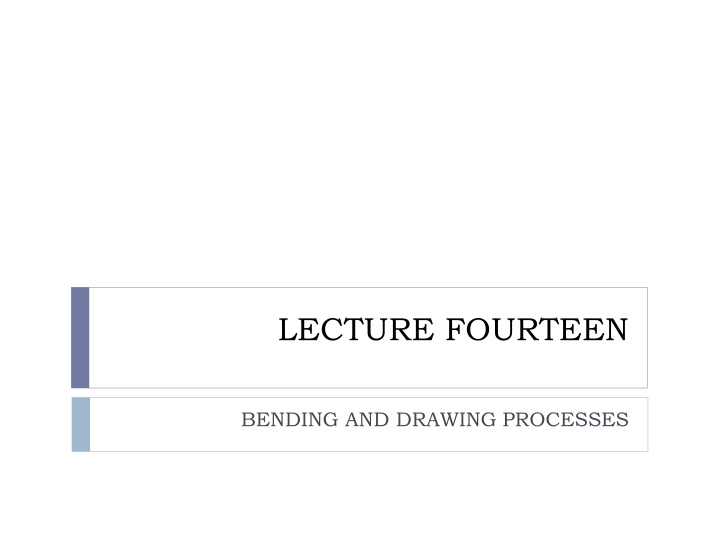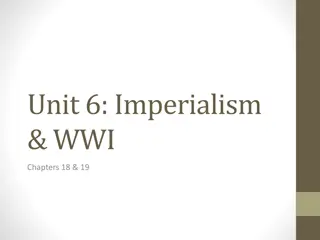LECTURE FOURTEEN
Sheet metal bending and drawing processes are essential in metalworking, involving operations like V-bending and edge bending for shaping metals. Drawing operations create complex parts like beverage cans and automobile body panels. Learn about the mechanics of drawing various metal parts efficiently.
Download Presentation

Please find below an Image/Link to download the presentation.
The content on the website is provided AS IS for your information and personal use only. It may not be sold, licensed, or shared on other websites without obtaining consent from the author.If you encounter any issues during the download, it is possible that the publisher has removed the file from their server.
You are allowed to download the files provided on this website for personal or commercial use, subject to the condition that they are used lawfully. All files are the property of their respective owners.
The content on the website is provided AS IS for your information and personal use only. It may not be sold, licensed, or shared on other websites without obtaining consent from the author.
E N D
Presentation Transcript
LECTURE FOURTEEN BENDING AND DRAWING PROCESSES
Bending operation Bending in sheet-metalwork is defined as the straining of the metal around a straight axis, as in Figure (14.1) Figure (14.1) show bending of sheet metal
Bending operations are performed using punch and die tooling. The two common bending methods and associated tooling are V-bending, performed with a V-die; and edge bending, performed with a wiping die. These methods are illustrated in Figure (14.2) Figure (14.2) types of bending operations
Drawing operation Drawing is a sheet-metal-forming operation used to make cup-shaped, box-shaped, or other complex-curved and concave parts. It is performed by placing a piece of sheet metal over a die cavity and then pushing the metal into the opening with a punch, as in Figure 14.3. The blank must usually be held down flat against the die by a blankholder. Common parts made by drawing include beverage cans, ammunition shells, sinks, cooking pots, and automobile body panels.
Mechanic of Drawing Drawing of a cup-shaped part is the basic drawing operation, with dimensions and parameters as pictured in Figure 14.3. A blank of diameter Dbis drawn into a die cavity by means of a punch with diameter Dp. The punch and die must have corner radii, given by Rpand Rd. If the punch and die were to have sharp corners (Rpand Rd=0), a hole-punching operation (and not a very good one) would be accomplished rather than a drawing operation. The sides of the punch and die are separated by a clearance c. This clearance in drawing is about 10% greater than the stock thickness: c=1.1t The punch applies a downward force F to accomplish the deformation of the metal, and a downward holding force Fh is applied by the blankholder, as shown in the sketch.















